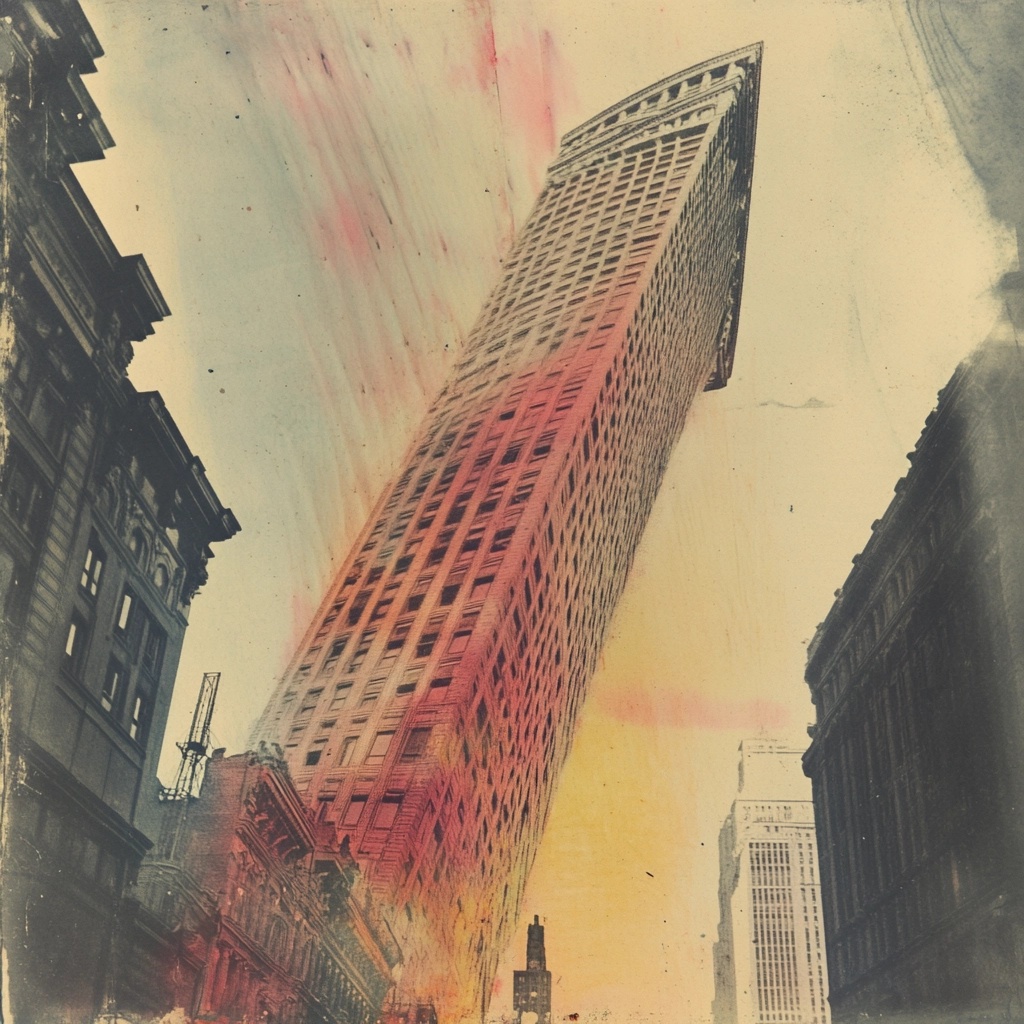THE SKYSCRAPER IN B FLAT (5)
By:
April 2, 2025

“The Skyscraper in B Flat,” which originally appeared in The Black Cat (June 1904), is is an example of proto-sf’s fascination with the power of vibrations. HiLoBooks is pleased to serialize the story for HILOBROW’s readers.
ALL INSTALLMENTS: 1 | 2 | 3 | 4 | 5.
The door was locked, but Bond burst it open with his shoulder. There was a bright outer office, with several glass cases, badly damaged, containing beautiful violins. Beyond this a door stood ajar into a room, from which proceeded a clear, musical tone.
Bond rushed towards it. The inner room was fitted up as a workshop, and was half open to the outer air by the fall of the masonry. On an elaborate joiner’s bench was clamped a bass viol, and upon it a peculiarly shaped bow ran regularly to and fro across two strings, with a monotonous iteration of sound. This bow was attached to a flexible steel rod that played from a purring electric motor beside the instrument.
Bond scarcely knew what he had expected to find, but he was astonished. There was no one in the room. But he brought a hammer smashing down upon the whole musical apparatus, and the ceaseless B-flat drone was silent. Then after a glance about the place he went down-stairs again, sliding most of the way on the banister rail.
For half an hour after he reached the sidewalk again there was no visible change in the condition of the skyscraper. It still reeled and tottered. Then, by minute degrees, the oscillations grew slower and weaker. In an hour and a half it was plain that the building was regaining its balance. It was then nearly eight o’clock.
Bond thereupon looked up the address of Gotthard Klein in a city directory, and started to find him, with cold rage in his heart. The place turned out to be a pretty suburban cottage, with early smoke rising from the chimney. The door was opened by Mrs. Klein herself, a middle-aged, fresh-faced woman, with a faint German accent.
“Is Mr. Klein in? I must see him,” demanded Bond, sternly. “I am the owner of the Platte Building, where he has his office. You know, of course, what has been going on there?” he added, at the woman’s look of bewilderment.
“No,” she said, doubtfully. “I have no time to read the papers. Gotthard is here, yes, — but so sick! He will not know you. The doctor says it is pneumonia. He should not have worked yesterday. He had to come home and go to bed at three o’clock. I have not closed an eye this night.”
She led Bond in, and gently opened a door into an adjoining bedroom. There lay the violin-builder, flushed with fever, his eyes shut, but muttering incoherent German words. Sobered by this sight, Bond stepped back and softly closed the door again.
“Your husband builds violins. Does he do anything else?” he asked.
“He makes also guitars, sometimes, and mandolins. And he invents, oh! wonderful things. He is working now on a violin to play itself, like the machines to play pianos. But I ought not to tell you of this. It is not finished.”
“Hum!” said Bond, meditating. “Do you know that he went away yesterday and left the electric power turned on and his invention running?”
“No — heavens! Will he have to pay for all this time? Is it running yet?” she ejaculated, horrified in all her thrifty soul.
“No,” said Bond. “I turned it off.”
RADIUM AGE PROTO-SF: “Radium Age” is Josh Glenn’s name for the nascent sf genre’s c. 1900–1935 era, a period which saw the discovery of radioactivity, i.e., the revelation that matter itself is constantly in movement — a fitting metaphor for the first decades of the 20th century, during which old scientific, religious, political, and social certainties were shattered. More info here.
SERIALIZED BY HILOBOOKS: James Parker’s Cocky the Fox | Annalee Newitz’s “The Great Oxygen Race” | Matthew Battles’s “Imago” | & many more original and reissued novels and stories.
